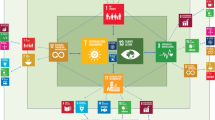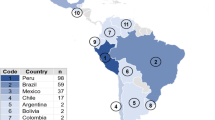Abstract
The quest for long-term sustainable energy supplies and the imperative of environmentally sound energy use are the two main interrelated aspects of the vital energy discussion that underpin today’s global agenda. Energy considerations are of paramount importance to key global concerns such as climate change, sustainable development, poverty reduction and economic growth.
Sustainable development underlines the need to manage energy resources judiciously; on the other hand, no development can occur without access to basic energy services. Access to energy is required in all economic and social sectors, and inequality in capacity to access energy resources, and to utilise such resources for development purposes, results in further inequality in wealth distribution, be it in terms of social welfare or economic competitiveness.
It is to be recalled that, globally over 1.3 billion people still remain without electricity access and more than 95% of them are either in Africa or Asia. Recognizing that access to energy services in developing countries is essential for the achievement of the Sustainable Development Goals, which would help to reduce poverty, the United Nations launched the ‘Sustainable Energy for All’ Decade (SE4ALL). Furthermore, the revived interest in alternative and renewable energy resources, combined with the substantial advances in the related science and technology in recent decades, justifies the priority given to addressing energy sustainability and access also reflected in the new set of SDGs that includes energy (Goal 7).
Access provided by Autonomous University of Puebla. Download chapter PDF
Similar content being viewed by others
Keywords
12.1 Meeting the Basic Energy Needs: A Priority
Our ways of producing and using energy have directly influenced the structure and development of all societies. For three centuries the human activities have been consuming ever more energy, even as governments adopt increasing vigorous policies for its conservation. Thus, the wide use and application of alternative and sustainable energy forms are necessary in order to fulfil the world’s ever-growing needs.
Sustainable development underlines the need to manage energy resources judiciously; on the other hand, no development can occur without access to basic energy services. Access to energy is required in all economic and social sectors, and inequality in capacity to access energy resources and to utilise them for development purposes, results in further inequality in wealth distribution, be it in terms of social welfare or economic competitiveness. The international community has thus institutional, scientific, financial and ethical responsibilities to respond to basic energy needs in an inclusive and sustainable way. This is particularly important for those with poor access to energy resources.
Recognizing that access to energy services in developing countries is essential for the achievement of the Sustainable Development Goals, which would help to reduce poverty, the United Nations launched the ‘Sustainable Energy for All’ Decade . Furthermore, the revived interest in alternative and renewable energy resources, combined with the substantial advances in the related science and technology in recent decades, justifies the priority given to addressing energy sustainability and access also reflected in the new set of SDGs that includes energy (Goal 7).
Energy is seen as an essential component in any economic and social development processes, and the capacity to meet the basic energy needs of all citizens should be a key objective. Besides, it constitutes a prerequisite to reaching the Sustainable Development Goals, energy being one of them, and constitutes a major multiplier of the other Goals as few, if any of them, can be achieved without it.
In most of the developing countries, public electric utility grids and improved infrastructure for energy supply exist mainly in urban and peri-urban areas. Globally over 1.3 billion people still remain without electricity access, and more than 95% of them are either in Africa or Asia. Some 85% of those people leave in peripheral urban and rural areas of developing countries. In Sub-Saharan Africa, approximately 70% of the population does not have access to electricity, and this figure rises up to 80% for the rural areas (Fig. 12.1). Households may spend as much as 30% of their disposable income on fuel-based lighting, and women devote at least a quarter of total household labour to wood collection, while those consumers receive poor services in return.
12.2 Energy: Human Development–Climate Nexus
The quest for long-term sustainable energy supplies and the imperative for environmentally responsible energy use are the two main interrelated aspects of the vital energy component that underpins today’s global agenda. Energy considerations are of paramount importance to key global concerns such as climate change, sustainable development, poverty reduction and economic growth. In this regard, climate change has, over the last decades, evolved into an issue of global concern. In this regard, there is increasing consensus in both the scientific and political communities that significant reductions in emissions are necessary in order to limit climate changes to manageable levels.
Concurrently, influence of some selected energy indicators on Human Development Index (HDI) components highlights the strong impact of energy on Sustainable Development. More specifically, the role of access to electricity services and the electricity consumption per capita constitutes the key factors that have a stronger positive influence on the achievement of the Sustainable Development and related targets. The figures below (Figs. 12.2, 12.3 and 12.4) show for example the evident correlation that has the energy indicators with the life expectancy as one of the HD. Similarly, the electricity consumption and access to electricity services have a strong emphasis on the literacy rate as well as on the leaving conditions and the social development including the gender development particularly in the developing countries.
While progress will occur and the number of people with access to modern energy services will increase, population growth will erase most of these gains, meaning that it is unlikely that the target of the SDGs can be met by 2030, if no appropriate measures are taken.
12.3 Linking the Agendas
Energy strategies must be governed by a wide array of intertwined issues. It is no longer possible to satisfy the world’s energy demands by the exploitation of a limited range of energy resources. To ensure a viable socioeconomic future for all, the international community needs to expend more effort on the development and wide use of renewable and environmentally sound sources of energy as a viable complementary alternative to the conventional methods of energy generation and promote efficient use of the latest. For low density rural populations, decentralised energy technologies based on renewable energy sources offer a viable alternative to grid extensions; as such, they constitute a valuable component in the global efforts aiming at addressing the global sustainability.
Responding to the energy challenges requires the diversification of energy sources. It also calls for building a knowledge base, disseminating relevant technical and scientific knowledge and promoting appropriate energy policies and choices as a foundation for increased use and application of the various environmentally sound energy technologies. Furthermore, joint international efforts, effective dialogue and cooperation are needed in order to find solutions to complex energy issues.
The process of moving from the concept of energy development focusing on economic growth to a new one centred on global sustainable development including environment protection will thus be made possible only if the current energy development paradigm is changed.
We stand at the crossroads where we believe that it is vital to promote a comprehensive, holistic approach to affordable and sustainable energy access, sustainable development and climate change.
Author information
Authors and Affiliations
Editor information
Editors and Affiliations
Rights and permissions
Copyright information
© 2020 Springer Nature Switzerland AG
About this chapter
Cite this chapter
Benchikh, O. (2020). Addressing the Energy Challenges: Needs and Perspectives. In: Sayigh, A. (eds) Renewable Energy and Sustainable Buildings. Innovative Renewable Energy. Springer, Cham. https://doi.org/10.1007/978-3-030-18488-9_12
Download citation
DOI: https://doi.org/10.1007/978-3-030-18488-9_12
Published:
Publisher Name: Springer, Cham
Print ISBN: 978-3-030-18487-2
Online ISBN: 978-3-030-18488-9
eBook Packages: EnergyEnergy (R0)








